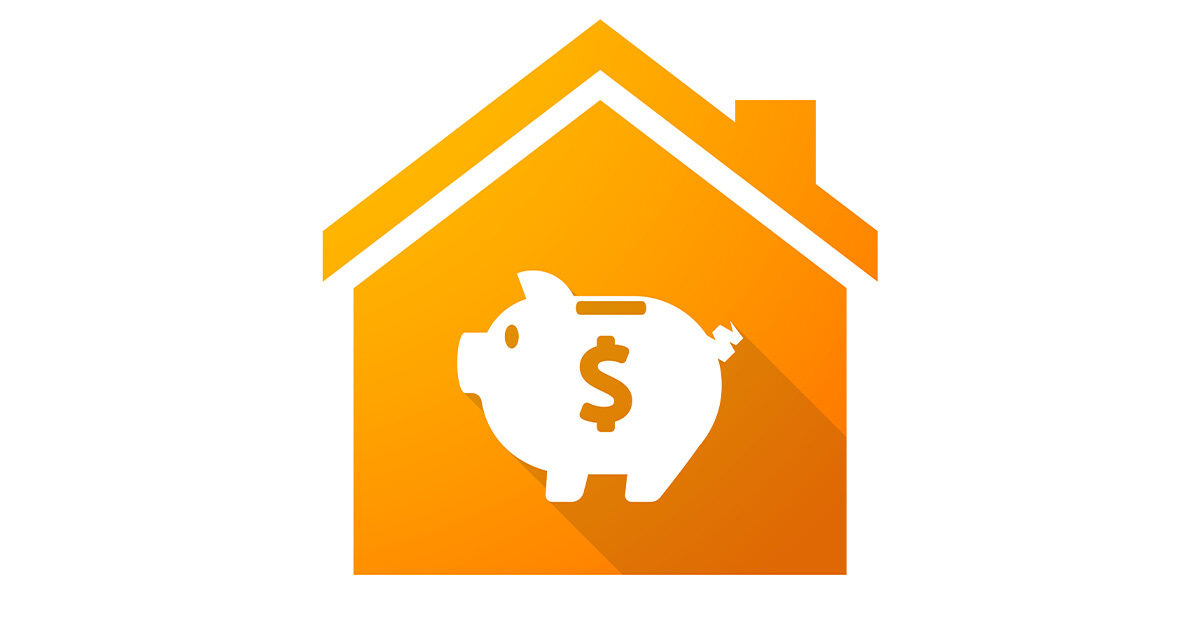Equity Improves For U.S Homeowners As Housing Market Boom Shows Signs Of Revival
ATTOM released its second-quarter 2023 U.S. Home Equity & Underwater Report, which shows that 49 percent of mortgaged residential properties in the United States were considered equity-rich in the second quarter, meaning that the combined estimated amount of loan balances secured by those properties was no more than half of their estimated market values.
The portion of mortgaged homes that were equity-rich in the second quarter of 2023 increased from 47 percent in the first quarter of 2023, to the highest point in at least four years. With home prices rebounding across the U.S., the report found that the level of equity-rich mortgage-payers went up from the first quarter of 2023 to the second quarter of 2023 in 45 of the nation’s 50 states.
The gains followed two straight quarterly drop-offs caused by a temporary slowdown in the U.S. housing market that had threatened to end a decade-long run of price and equity growth. The second-quarter upturn marked another sign of how the market shift has helped homeowners, as home-seller profits also spiked.
While equity-rich levels rose in the second quarter, the report also shows that less than 3 percent of mortgaged homes in the U.S., or one in 36, were considered seriously underwater in the second quarter of 2023. That meant they had a combined estimated balance of loans secured by the property of at least 25 percent more than the property’s estimated market value.
Just 2.8 percent of mortgaged-homes were seriously underwater in the second quarter of this year, also the lowest point since at least 2019. The latest figure was down from 3 percent in the prior quarter and 2.9 in the second quarter of 2022.
“The second-quarter market revival bestowed immediate benefits on homeowners around the nation in the form of better profits for sellers and rising equity for those staying put. Equity levels were high even during the recent downturn, and now they are going back up and better than ever,” said Rob Barber, CEO for ATTOM. “It is well worth nothing that the market remains in flux and the recent improvement could easily be temporary. Lots of changing forces are at work affecting whether boom times are really back, especially amid a recent increase in mortgage rates. But with the 2023 peak buying season still underway, it seems that homeowners can reasonably expect their household balance sheets to grow a bit more in the near future.”
Equity for U.S. homeowners improved in the second quarter as prices for single-family homes and condos nationwide rose throughout most of the country, reversing a market slowdown that had run from the middle of last year to the early part of this year. Nationwide, the median home value shot up 10 percent in the second quarter to yet another all-time high of $350,000, after dropping 7 percent over the prior three quarters.
The rebound came amid multiple factors that combined to put more financial resources in the hands of house hunters during a time of rising demand and tight housing inventory.
Home mortgage rates were down by one-half to three-quarters of a point for a 30-year fixed loan during the second quarter, after more than doubling in 2022 to about 7 percent. At the same time, consumer price inflation dipped down under 4 percent, the stock market improved after a year of ups and downs, and unemployment remained less than 4 percent. That happened as the peak annual buying season revved up during a time when the supply of homes for sales around the U.S. remained historically low.
With several months to go in the 2023 home-buying season, the potential for more gains remains in place. But that will depend heavily on whether key market drivers continue to improve or decline.
Largest increases in equity-rich share of mortgages spread across Midwest
The portion of mortgages that were equity-rich grew in most states around the U.S. from the first quarter of 2023 to the second quarter of 2023, commonly by up to four percentage points. The biggest gains came in the Midwest region, led by Wisconsin (portion of mortgages homes considered equity-rich rose from 41.6 percent in the first quarter of 2023 to 47.1 percent in the second quarter of 2023), Michigan (up from 42.5 percent to 47.7 percent), South Dakota (up from 41.4 percent to 46.4 percent), Ohio (up from 36.7 percent to 41.3 percent) and New Jersey (up from 38.9 percent to 43 percent).
At the other end of the scale, the South and West regions had the only states where the equity-rich share of mortgaged homes decreased from the first quarter to the second quarter of this year. They were Nevada (down from 49 percent to 46.8 percent), Louisiana (down from 24.1 percent to 23 percent), Arizona (down from 56.4 percent to 55.3 percent), Florida (down from 61 percent to 60.4 percent) and Utah (down from 58.1 percent to 57.8 percent).
Largest decreases in seriously underwater mortgages also in Midwest
The portion of mortgaged homes considered seriously underwater dipped, and remained historically low, during the second quarter of 2023 in most of the nation. The rate declined in 37 states, with the biggest decreases clustered in the Midwest, a region that has some of the higher levels of seriously underwater mortgages. The improvements were led by Missouri (share of mortgaged homes that were seriously underwater down from 6.4 percent in the first quarter of 2023 to 4.8 percent in the second quarter of 2023), Illinois (down from 6.4 percent to 5.1 percent), South Dakota (down from 4.8 percent to 4 percent), Kansas (down from 3.7 percent to 3 percent) and Ohio (down from 5 percent to 4.3 percent).
States where the percentage of seriously underwater homes increased the most from the first to the second quarter of this year were led by Indiana (up from 3.3 percent to 8.1 percent), Hawaii (up from 2 percent to 3.6 percent), Maine (up from 2.5 percent to 2.7 percent), Mississippi (up from 5.6 percent to 5.8 percent) and Utah (up from 1.7 percent to 1.9 percent).
Highest levels of equity-rich homeowners still in the West
The West continued to have the highest levels of equity-rich mortgaged properties around the U.S., with six of the top 10 states in the second quarter of 2023. Those with the highest portions were Vermont (77.5 percent of mortgaged homes were equity-rich), California (63.3 percent), Montana (60.9 percent), Florida (60.4 percent) and Idaho (59.4 percent).
Nine of the 10 states with the lowest percentages of equity-rich properties in the second quarter of 2023 were in the Midwest and South. The smallest portions were in Louisiana (23 percent of mortgaged homes were equity-rich), Alaska (29.2 percent), Illinois (29.5 percent), West Virginia (30 percent) and North Dakota (31.3 percent).
Among 107 metropolitan statistical areas around the nation with a population of at least 500,000, the West and South continued to dominate the list of places with the highest portion of mortgaged properties that were equity-rich. All but one of the top 20 were in those regions during the second quarter of 2023, led by San Jose, CA (76.3 percent equity-rich); Los Angeles, CA (69.3 percent); San Francisco, CA (69 percent); San Diego, CA (68.8 percent) and Sarasota-Bradenton, FL (66.6 percent). The leader in the Northeast region again was Portland, ME (60.7 percent) while the top metro in the Midwest continued to be Grand Rapids, MI (54.7 percent).
The 10 metro areas with the lowest percentages of equity-rich properties in the second quarter of 2023 again were in the Midwest and South. The smallest levels were in Baton Rouge, LA (19.3 percent of mortgage homes were equity-rich); Jackson, MS (26.6 percent); Little Rock, AR (29.2 percent); Virginia Beach, VA (29.7 percent) and New Orleans, LA (31.7 percent).
The portion of mortgaged homes considered equity rich went up from the first quarter of 2023 to the second quarter of 2023 in 81 of the 107 metro areas with sufficient data (76 percent) and was up from second quarter of last year in 64 percent.
Top equity-rich counties clustered in Northeast and West
Among 1,712 counties that had at least 2,500 homes with mortgages in the second quarter of 2023, 14 of the top 20 equity-rich locations were in the Northeast and West regions.
Counties with the highest share of equity-rich properties were Chittenden County (Burlington), VT (85.6 percent equity-rich); Nantucket County, MA (83.7 percent); Dukes County (Martha’s Vineyard), MA (82.7 percent); Manistee County, MI (80.6 percent) and Washington County (Montpelier), VT (79 percent).
Counties with populations of at least 500,000 and the highest equity-rich rates were San Mateo County, CA (outside San Francisco) (78.5 percent equity-rich); Santa Clara County (San Jose), CA (77.4 percent); Orange County, CA (outside Los Angeles 73.3 percent); Alameda County (Oakland), CA (71.8 percent) and Pinellas County (Clearwater), FL (70.8 percent).
Counties with the smallest share of equity-rich homes in the second quarter of 2023 were Vernon Parish (Leesville), LA (8.2 percent equity-rich); Lea County (Lovington), NM (10.1 percent); Beauregard Parish, LA (east of Lafayette) (10.7 percent); Iberville Parish, LA (outside Baton Rouge) (12.4 percent) and Geary County (Junction City), KS (13.7 percent).
Counties with populations of at least 500,000 and the smallest equity-rich portions were Baltimore City, MD (27.9 percent equity-rich); Cook County (Chicago), IL (28.8 percent); Prince George’s County, MD (outside Washington, DC) (30.3 percent); Lake County, IL (outside Chicago) (31.1 percent) and Anne Arundel County (Annapolis), MD (31.6 percent).
At least half of all mortgaged properties considered equity-rich in almost 50 percent of zip codes
Among 9,082 U.S. zip codes that had at least 2,000 residential properties with mortgages in the second quarter of 2023, there were 4,183 (46 percent) where at least half the mortgaged properties were equity-rich.
Forty-four of the top 50 zip codes were in California or Florida, with seven of the top 10 in Santa Clara County, CA. They were led by zip codes 93108 in Santa Barbara, CA (87.9 percent of mortgaged properties were equity-rich); 94024 in Los Altos, CA (86.4 percent); 93109 in Santa Barbara, CA (86.2 percent); 95070 in Saratoga, CA (86.1 percent) and 95014 in Cupertino, CA (85.4 percent).
Largest shares of seriously underwater mortgages remain in Midwest and South
The Midwest and South again had the top 10 states with the highest shares of mortgages that were seriously underwater in the second quarter of this year. The top five were Louisiana (10.5 percent seriously underwater), Indiana (8.1 percent), Kentucky (5.9 percent), Iowa (5.9 percent) and Mississippi (5.8 percent).
The smallest shares were in Vermont (0.9 percent seriously underwater), California (1.1 percent), Rhode Island (1.2 percent), Massachusetts (1.2 percent) and Florida (1.3 percent).
Among 107 metropolitan statistical areas with a population greater than 500,000, those with the largest shares of mortgages that were seriously underwater in the second quarter of 2023, were Baton Rouge, LA (10.8 percent); Indianapolis, IN (8.6 percent); New Orleans, LA (7.2 percent); Syracuse, NY (6.1 percent) and Scranton, PA (6 percent).
While most seriously underwater rates around the country changed by less than one percentage point from the first quarter to the second quarter of this year, the portion decreased in 81, or 76 percent, of the metro areas around the U.S. with enough data to analyze. Seriously underwater rates were down, year over year, in 54 percent of the metro areas analyzed.
More than 20 percent of residential mortgages seriously underwater in just 45 zip codes
Among 9,082 U.S. zip codes that had at least 2,000 homes with mortgages in the second quarter of 2023, there were only 45 locations where more than 20 percent of mortgaged properties were seriously underwater. Of those, 23 were in Chicago, IL; Cleveland, OH; Detroit, MI; Kansas City, MO; Philadelphia, PA or St. Louis, MO.
The top five zip codes with the largest shares of seriously underwater properties in the second quarter of 2023, were 10570 in Pleasantville, NY (44.3 percent of mortgaged homes were seriously underwater); 60636 in Chicago, IL (43.7 percent); 44108 in Cleveland, OH (41.8 percent); 10520 in Croton-on-Hudson, NY (40.7 percent) and 62206 in East St. Louis, IL (39.5 percent).
Most homeowners facing foreclosure have at least some equity
Only about 255,700 homeowners were facing possible foreclosure in the second quarter of 2023, or about one in every 250 mortgaged residential properties in the U.S. Of those facing foreclosure, about 235,500, or 92 percent, had at least some equity built up in their homes.
States where the largest portion of homeowners facing possible foreclosure had equity in their properties in the second quarter of 2023, included Utah (97 percent with equity), North Carolina (96 percent), Florida (96 percent), Idaho (96 percent) and New Hampshire (95 percent).
States with the lowest percentages included Louisiana (82 percent with equity), Illinois (85 percent), North Dakota (85 percent), Maryland (86 percent) and Arkansas (87 percent).
Report methodology
The ATTOM U.S. Home Equity & Underwater report provides counts of properties based on several categories of equity — or loan to value (LTV) — at the state, metro, county and zip code level, along with the percentage of total properties with a mortgage that each equity category represents. The equity/LTV is calculated based on record-level loan model estimating position and amount of loans secured by a property and a record-level automated valuation model (AVM) derived from publicly recorded mortgage and deed of trust data collected and licensed by ATTOM nationwide for more than 155 million U.S. properties. The ATTOM Home Equity and Underwater report has been updated and modified to better reflect a housing market focused on the traditional home buying process. ATTOM found that markets where investors were more prominent, they would offset the loan to value ratio due to sales involving multiple properties with a single jumbo loan encompassing all of the properties. Therefore, going forward such activity is now excluded from the reports in order to provide traditional consumer home purchase and loan activity.

The Place for Lending Visionaries and Thought Leaders. We take you beyond the latest news and trends to help you grow your lending business.



